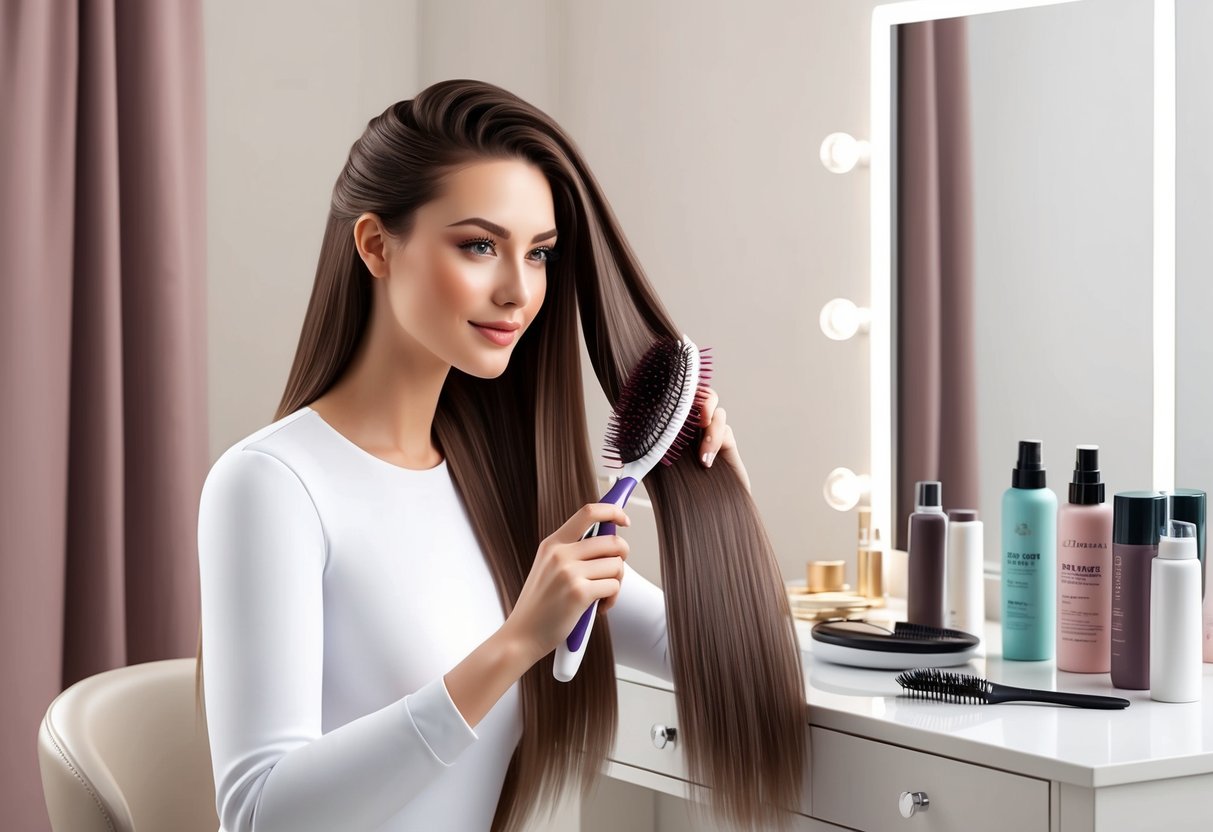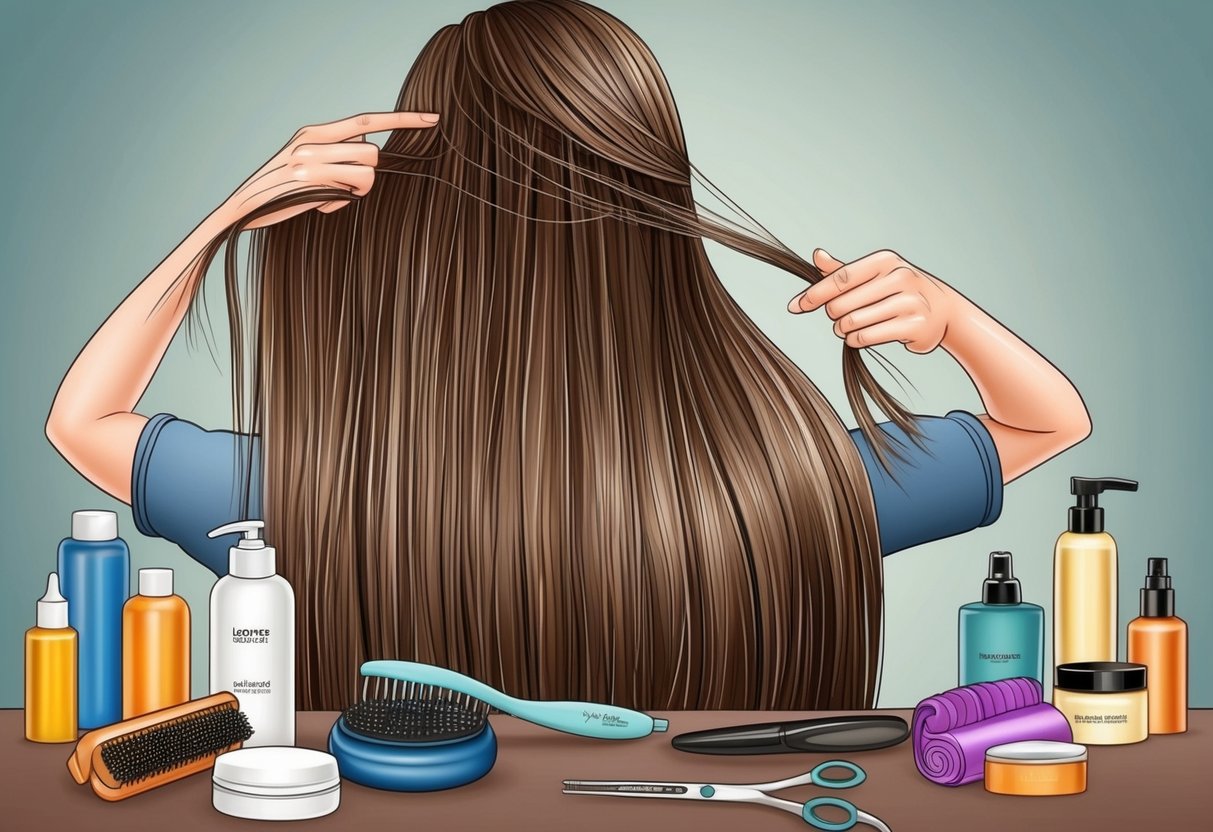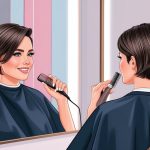
Choosing and Applying Quality Hair Products
Selecting suitable hair products is essential for maintaining scalp health, softness, and shine. High-quality formulations cater to long hair’s specific needs, minimizing breakage and promoting lasting manageability.
Benefits of Sulfate-Free Shampoo
Sulfate-free shampoos gently cleanse the scalp and hair without harsh detergents that can strip away natural oils. This is especially important for long hair, which is prone to dryness and split ends when over-cleansed.
Sulfates, commonly listed as SLS or SLES on ingredient labels, can cause irritation and moisture loss in sensitive hair types. By opting for a sulfate-free option, hair color and keratin treatments last longer because their protective layers stay intact.
Individuals who use heat-styling or chemical treatments benefit from the extra moisture retention and softer texture these shampoos provide. For those who want to preserve their hair’s natural oils, sulfate-free formulas balance effective cleansing with gentle care.
This makes them ideal for anyone looking to achieve luscious, healthy locks.
Preventing Product Buildup
Product buildup happens when styling products, conditioners, and even certain shampoos leave behind residue that isn’t fully rinsed away. Over time, this leads to dull, heavy, and limp hair as residue blocks moisture and essential nutrients from penetrating the strands.
Key signs include a waxy or tacky feel and difficulty achieving volume or shine. To prevent buildup, use a clarifying shampoo once every few weeks, especially if you regularly use dry shampoo, hairspray, or leave-in treatments.
Alternatively, incorporate lightweight, water-soluble styling products when possible and always rinse your hair thoroughly after washing. Those with long hair should be extra vigilant, as more surface area means more opportunity for residue to accumulate.
Consistent, attentive cleansing is a cornerstone of optimal long hair care.
Proper Use of Conditioner
Conditioner is vital for detangling, hydrating, and strengthening long hair. It smooths the cuticle, reducing frizz and making hair easier to manage.
The proper way to use conditioner is to focus application on the mid-lengths and ends, where hair is oldest and most prone to dryness. Avoid the scalp area to prevent excess oiliness and product buildup.
Leave the conditioner in for the recommended time, usually two to five minutes, to allow active ingredients like proteins and moisturizers to penetrate the shaft. Rinse with cool or lukewarm water to seal the cuticle for enhanced shine.
For best results, select a conditioner formulated for specific hair needs—such as frizz control, deep hydration, or color protection. This approach keeps long hair looking its best and reduces daily tangles.
Protecting Long Hair From Damage

Long hair is prone to split ends, dryness, and breakage, especially with frequent heat styling and rough handling. Prevention is possible with strategic care methods that target common sources of damage and keep hair strands resilient.
Trimming Regularly to Prevent Split Ends
Routine trims are essential to maintaining the strength and appearance of long hair. Split ends can travel up the hair shaft, causing breakage and uneven texture.
By scheduling a trim every 8 to 12 weeks, damaged ends are removed before they lead to further problems. Hair experts recommend that even if someone wants to grow their hair longer, trimming small amounts helps preserve length by reducing the risk of breakage.
The table below highlights the benefits of regular trims for long hair.
| Benefit | Impact on Long Hair |
|---|---|
| Prevents split ends | Keeps hair smooth and healthy |
| Reduces breakage | Maintains growth and thickness |
| Improves shape | Enhances overall appearance |
Gentle detangling before and after trimming can also help minimize additional damage, especially on fragile ends.
Minimizing Heat Styling Damage
Frequent use of heat styling tools, such as flat irons, curling wands, and blow dryers, weakens the hair cuticle over time. High temperatures remove moisture from the strands, making them brittle and prone to split ends.
Lowering the heat setting is a critical step—using the lowest effective temperature can achieve similar styling results with much less harm, as discussed in detail by The Glowing Fridge’s advice to choose low or medium settings.
Allowing hair to air dry when possible, limiting heat tool use to special occasions, and ensuring hair is completely dry before styling can all contribute to less damage.
Tip: If using a blow dryer, always move it continuously and avoid concentrating heat in one spot for extended periods.
Using Heat Protectants
Applying a heat protectant is a non-negotiable step before any hot tool styling. Heat protectants form a temporary barrier, helping to minimize moisture loss and shield the hair shaft from direct exposure to damaging temperatures.
These products come in sprays, creams, and serums. They should be applied evenly from mid-length to ends for full coverage.
Look for heat protectants containing silicones, such as dimethicone or cyclopentasiloxane, as these ingredients help smooth the cuticle and add shine. Many options are designed for different hair types—fine, thick, or color-treated—so choose one tailored to your needs.



